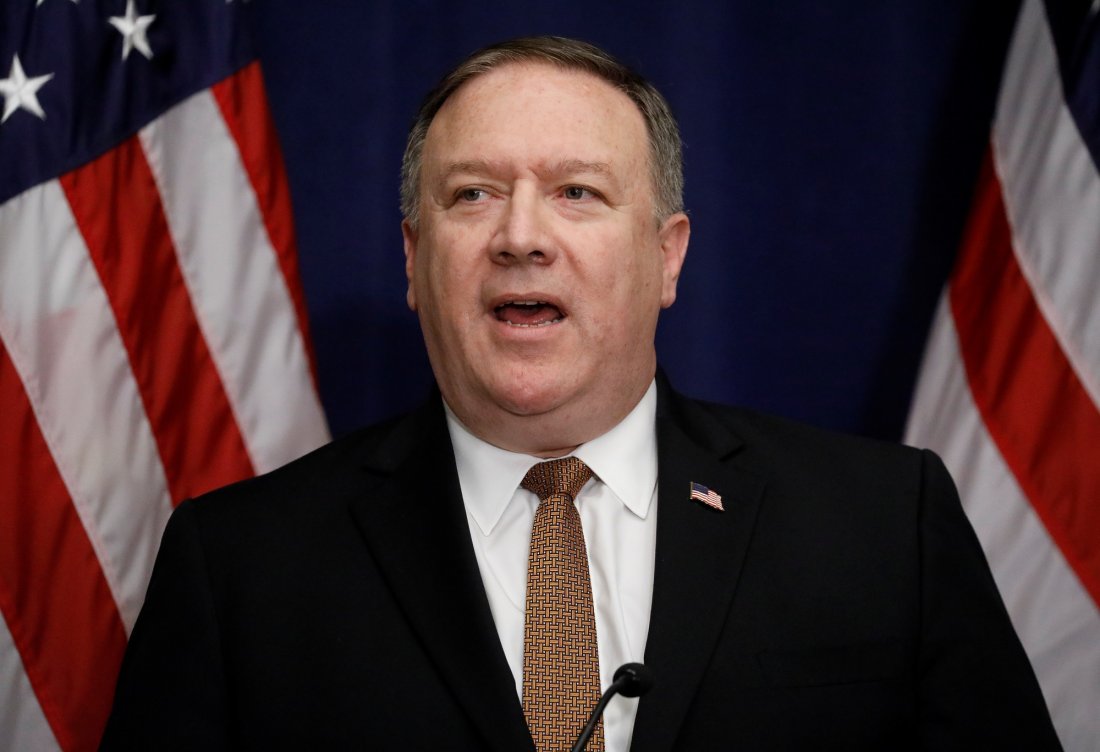by Harry J. Kazianis
 It was a " good trip ".
It was a " good trip ".
Well, that's how U.S. Secretary of State Mike Pompeo at least described his fourth visit to North Korea on Sunday.
We do know one thing for sure: his time with North Korean Chairman Kim Jong Un was short, as in three and a half hours altogether, comprised of a two-hour meeting and a ninety minute lunch.
“It’s a very nice day that promises a good future for both countries,” Kim is quoted as saying, as noted through an interpreter, while sitting for lunch with Pompeo.
While there is no way Pompeo, in roughly 210 minutes with Chairman Kim Jong Un, achieved any major breakthroughs Sunday, Pompeo may have accomplished his goal nonetheless: exploring the timing and possible locations for a second U.S.-North Korea summit.
Trump will likely be tempted to hold such a summit quickly—and possibly even in the North Korean capital of Pyongyang—to make history and drive headlines, pointing to another success right before the midterm elections. That could mean the administration offers, and North Korea accepts, a political declaration that ends the Korean War in exchange for a big action towards denuclearization, such as the closing of the Yongbyon nuclear complex.
While there was no major news coming out of the meeting, a part of the NY Times coverage on the meeting did catch my attention:
North Korean officials who dined with members of Mr. Pompeo’s entourage in a separate room said that it would be great if Mr. Trump visited Pyongyang for a second summit meeting with Mr. Kim.
Don't be shocked if it happens. As I explained in a recent piece in the American Conservative , Trump would be wise to consider such a move:
It’s time to send President Donald J. Trump to Pyongyang.
While that might seem a little premature and perhaps a little unhinged, follow my logic for a moment.
First, such an idea has been floated in the past—and not even by this administration. Back in 2000, then-secretary of state Madeline Albright went to North Korea to meet with then-leader Kim Jong-il to potentially set up an even bigger summit: between Kim and President Bill Clinton.
We should also consider the fact that Trump does not follow any of the conventions of traditional foreign policy thinking . He goes with his gut, and he loves to make a splash, dominating the media cycle every moment that he can, to the point that he even told a recent rally in West Virginia that he and Kim “ fell in love ,” knowing it would send the media into a tailspin. And nothing would dominate cable news more than Trump’s motorcade going through the streets of Pyongyang, where ICBMs custom-built to strike America traveled down the boulevard just last year.
Then there is the reality that Trump’s North Korea policy is unsustainable, something Trump himself likely understands . Shaking hands with Kim in Singapore back in June was interpreted as a signal to nations around Asia that U.S. policy towards the north is changing, and that while sanctions evasion won’t be encouraged, it won’t spark armed conflict either. Many are now beginning to take advantage of this . When you factor in the brewing U.S.-China trade war and the fact that 90 percent of all of North Korean exports go through Beijing one way or another, China will likely forget about any cooperation with the Trump administration on the north. In fact, there is evidence to suggest that the idea was suspect all along, especially when you consider China’s nearly unstoppable ability to control crude flows into the North . Considering these points together, one sees that maximum pressure is dead and buried.
No comments:
Post a Comment